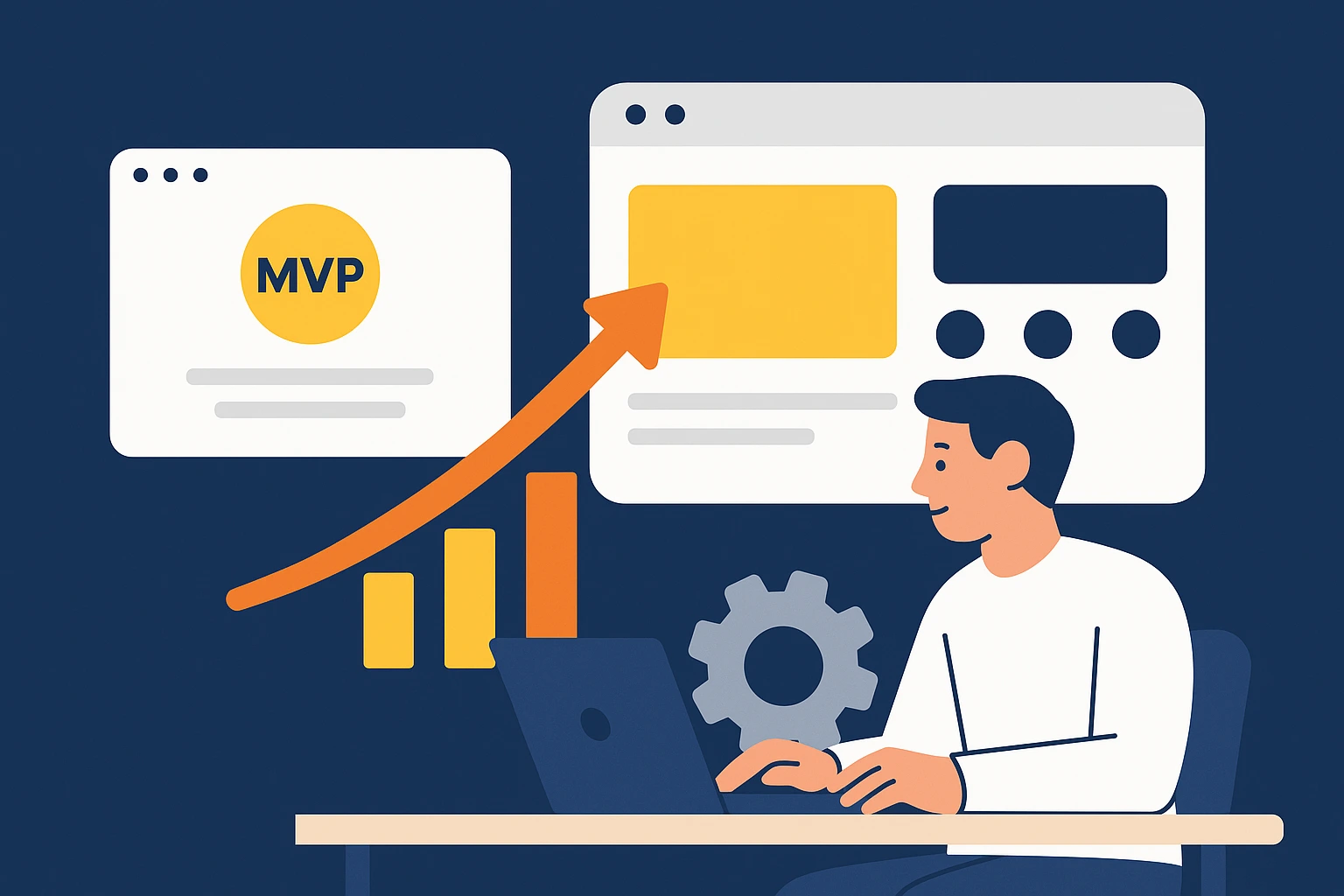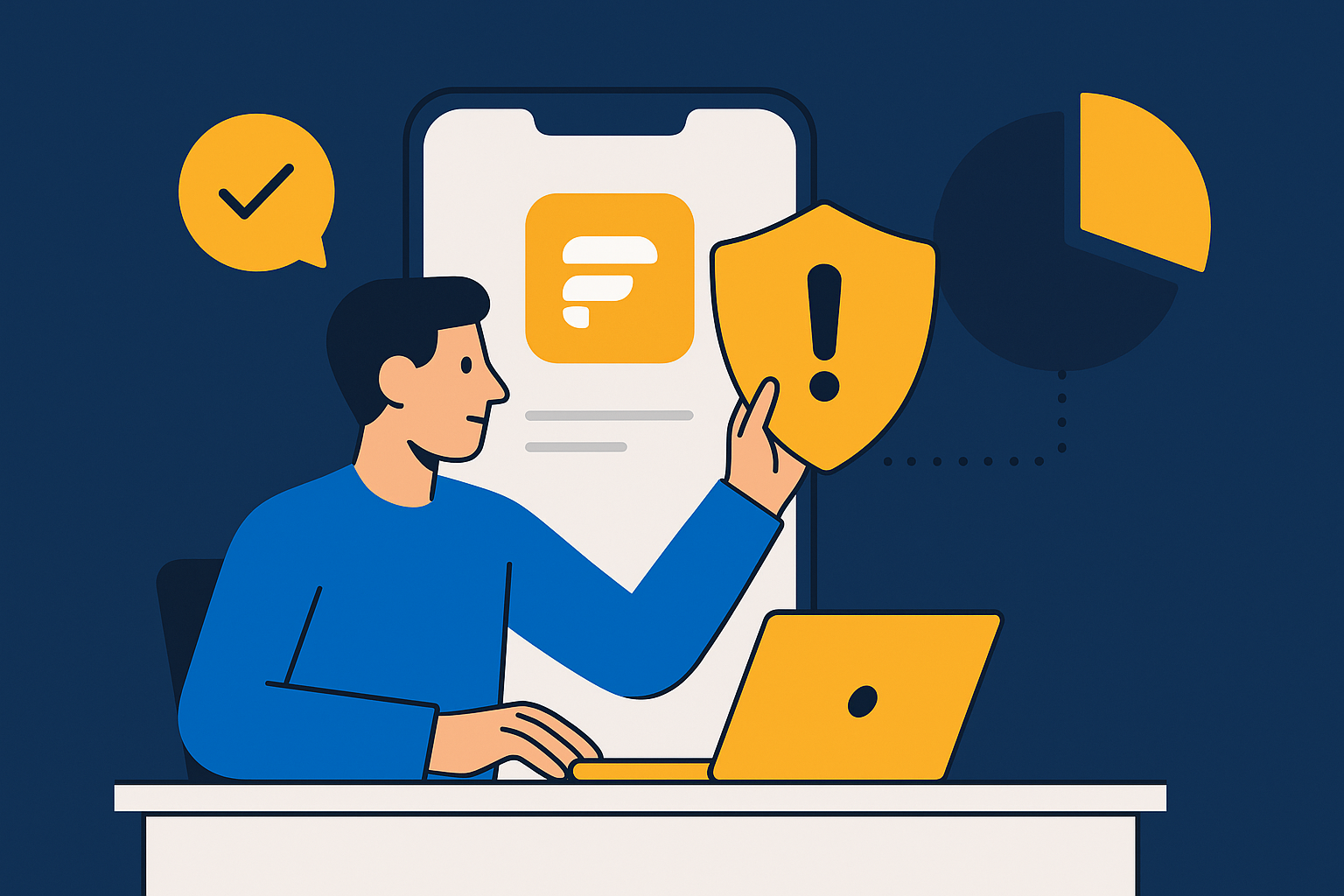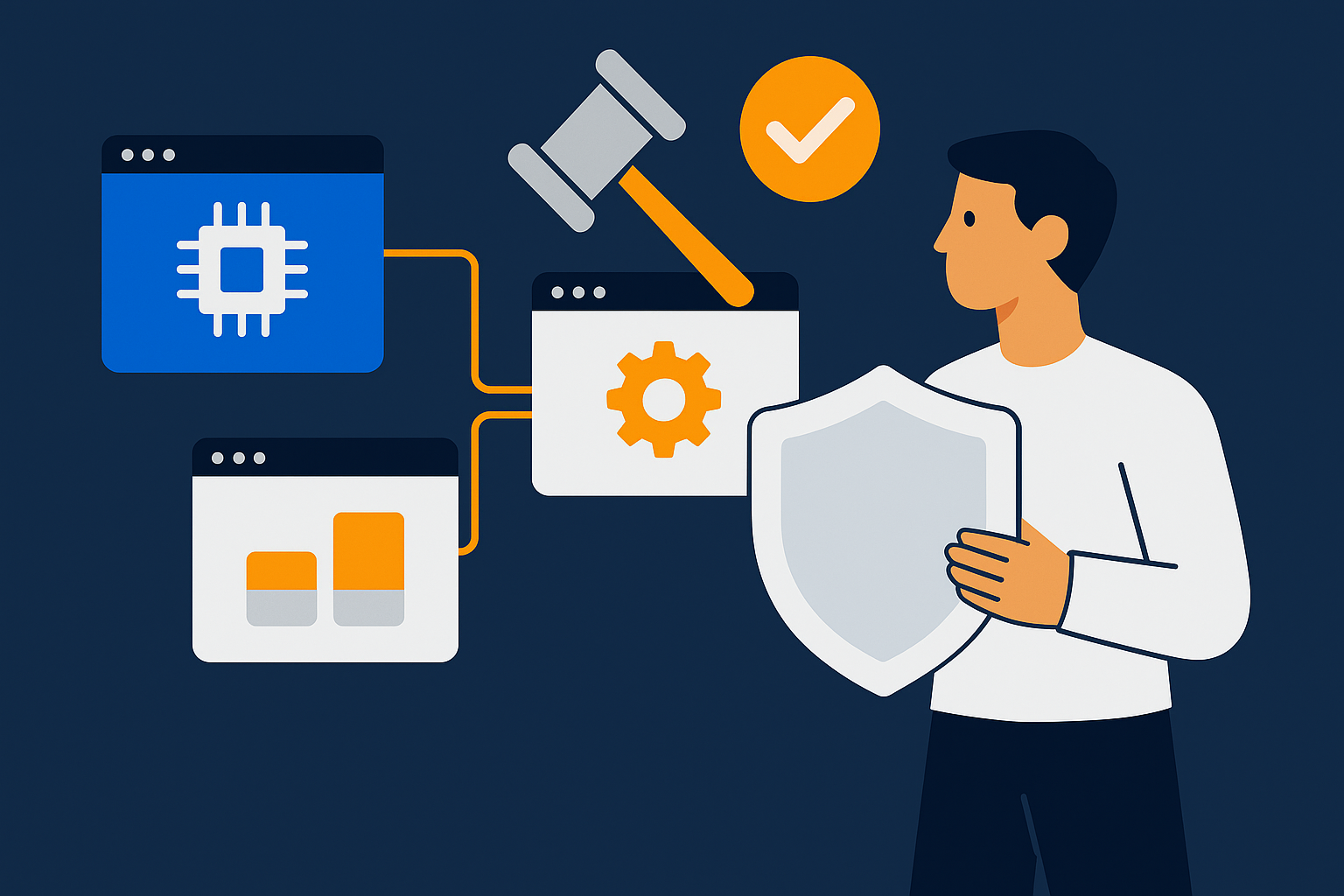Introduction

Launching an MVP is a milestone; scaling it into a product that customers trust, enterprises can buy, and teams can operate is the real test. Many digital products prove desirability and basic usability but stall when reliability, security, and procurement expectations enter the picture. The result is a costly rebuild—or a plateau at v1.0 that never moves the needle.
At CoreLine, we help leaders translate early traction into durable value. This article lays out a practical, procurement‑aware roadmap to transform an MVP into a market‑ready web application, platform, or mobile app—without losing speed or blowing up costs. It’s written for the decision‑makers who own P&L, carry delivery risk, and need clear steps, not platitudes.
Event/Performer Details

- Audience: C‑level executives, product leaders, startup founders, and marketing directors responsible for turning pilot wins into repeatable growth.
- Topic: How to progress from “works for early adopters” to “meets enterprise standards,” covering architecture, UX, security, compliance, scaling, and operations.
- Outcomes: A clear checklist, a 180‑day rollout model, and a tangible list of artifacts your organization should own by go‑live.
- CoreLine’s role: A digital product design and custom web app development agency guiding strategy, delivery, and operationalization across web, mobile, and enterprise integrations.
Why You Shouldn’t Miss It
- Actionable checklist that maps MVP gaps to business risk and cost.
- Enterprise‑grade guidance on identity, compliance, and procurement packs.
- A 180‑day scaling plan that protects momentum and budget.
- Practical signals to choose the right partner for MVP development services.
- Reusable templates for SLAs, risk logs, and operational runbooks.
Practical Information
- Format: This guide can be used as an internal playbook or a readiness gate in your roadmap.
- Time to implement: Typical 90–180 days depending on product complexity and integrations.
- Team model: Hybrid squad blending product, design, engineering, and compliance.
- Engagement: Start with a compact discovery to size scope, risks, and success metrics; roll forward with time‑boxed increments.
The gap between MVP and “market‑ready”
An MVP proves a core promise; a market‑ready product keeps that promise under load, scrutiny, and regulation.
- MVP focuses on desirability and feasibility; market‑ready adds reliability, auditability, resilience, and total cost visibility.
- MVP optimizes for learning speed; market‑ready optimizes for predictable delivery and low operational variance.
- MVP demonstrates fit; market‑ready qualifies for procurement, security review, data protection, and support SLAs.
The fastest route from A to B is not a rewrite; it’s an intentional expansion into non‑functional maturity with ruthless scope discipline.
Market‑ready checklist for web and mobile applications
1) Non‑functional requirements that executives can sign
- Define SLOs and error budgets for key journeys (e.g., sign‑in, checkout, file upload).
- Establish performance targets (p95 latency, cold‑start tolerances) and capacity assumptions per environment.
- Document recovery objectives (RPO/RTO) and test them with failover drills.
2) Security and privacy by design
- Threat model critical paths and admin operations; harden authentication, authorization, and secrets management.
- Map personal and sensitive data, retention, and deletion flows; implement consent and data subject request processes.
- Prepare security documentation: architecture overview, data flow diagrams, encryption-in-transit/at-rest, vulnerability management cadence, penetration test plan, and incident response runbook.
3) Enterprise identity and access
- Implement single sign‑on (SAML/OIDC) and automated user provisioning/deprovisioning (SCIM where applicable).
- Introduce role‑based access control aligned to least privilege; ensure audit logging for permission changes and high‑risk actions.
- Provide an “enterprise onboarding” mode with domain claim, SSO self‑serve, and billing alignment.
4) Data architecture and residency
- Classify data domains (PII, payments, telemetry, content) and set locality/residency constraints.
- Use data contracts between services; validate schemas in CI to prevent breaking changes.
- Define retention, archiving, and “right to be forgotten” with verifiable evidence.
5) Observability and operability
- Standardize logging, tracing, and metrics with product‑level dashboards; tie alerts to SLOs, not individual servers.
- Create runbooks for common incidents and a playbook for escalations across engineering, support, and customer success.
- Maintain a status page and communications templates; rehearse post‑incident reviews with action tracking.
6) Release engineering that de‑risks scale
- Implement CI/CD with gated promotions, feature flags, and blue/green or canary strategies.
- Version APIs and provide deprecation windows; publish migration guides for enterprise customers.
- Automate environment creation (infrastructure as code) and secrets rotation.
7) FinOps and total cost transparency
- Track unit economics (COGS per active user/tenant/transaction) and forecast spend under growth scenarios.
- Use budgets, alerts, and cost attribution tags per environment and feature set.
- Plan for capacity reservations or autoscaling policies to smooth spend spikes.
8) UX at scale
- Evolve an atomic design system with tokens for brand, spacing, and accessibility.
- Build multi‑tenant theming and localization strategy early; test with pseudo‑localization for text expansion.
- Instrument UX with funnels and task‑success metrics; use experiments sparingly with guardrails to avoid fatigue.
9) Compliance‑ready documentation
- Prepare a procurement pack: security whitepaper, data processing addendum, sub‑processor list, business continuity summary, and support SLAs.
- Keep an asset register for data stores, services, and vendor dependencies.
- Align internal controls to your chosen framework and capture evidence as part of daily workflows.
10) Support model customers can trust
- Define support tiers, response/restore targets, and channels (email, portal, chat).
- Integrate product telemetry with support to give agents context (last errors, feature flags, plan).
- Establish feedback loops: bugs and feature requests flow into a triaged backlog with visible status.
A 180‑day plan from pilot to production
Days 0–30: Proof hardens into a plan
- Outcomes: NFR spec, security/privacy baseline, observability plan, release strategy, and “one‑slide” architecture.
- Activities:
- Validate SLOs against business goals; define risk log and mitigation owners.
- Threat model priority flows; fix high/critical gaps first.
- Choose identity path (SSO/SCIM) and scope RBAC.
- Establish CI/CD, IaC, and baseline monitoring.
- Produce the first draft of the procurement pack.
- Team: Product lead, tech lead/architect, security lead, UX lead, DevOps, and a delivery manager.
Days 31–90: Build for reliability and enterprise fit
- Outcomes: SSO live, RBAC v1, observability in place, performance improvements on p95/p99, and support Tier‑1 playbook.
- Activities:
- Implement SSO/SCIM, audit logs, and consent management.
- Introduce feature flags and canary releases; run load tests to target SLOs.
- Stand up dashboards for product, engineering, and execs.
- Draft SLAs, DPA, and data maps; validate with a friendly design partner.
- Team expands: Add backend/frontend engineers, QA, compliance analyst, and a support lead.
Days 91–180: Prove it under real constraints
- Outcomes: Enterprise onboarding flow, cost telemetry, controlled rollouts, and two successful incident drills.
- Activities:
- Pilot enterprise tenant with SSO and custom roles; capture feedback.
- Run failover and incident simulations; publish post‑mortems.
- Finalize procurement artifacts; pre‑answer standard security questionnaires.
- Tune infra for cost; set budget alerts and unit‑cost dashboards.
- Enable localization and accessibility audit; fix critical findings.
Budget and team guardrails (principles, not price tags)
- People over tools: Invest first in a senior cross‑functional core—product, design, architecture, DevOps, and QA—then scale engineering bandwidth.
- Time‑box risk: Treat security remediation, performance tuning, and migration tasks as first‑class backlog items with clear acceptance criteria.
- Avoid premature complexity: Favor modular monoliths or well‑bounded services over fragmented microservices unless scale proves the need.
Top anti‑patterns that derail scaling
- “We’ll add SSO later.” Retrofitting identity escalates risk and sales friction.
- “Observability can wait.” Flying blind creates costly outages—and unhappy reference customers.
- “Let’s rewrite.” Extend intentionally; rewrite only with a clear, incremental migration plan.
- “We’ll answer security questionnaires when they arrive.” Prepare a reusable pack once; use it repeatedly.
Go‑live gate: questions to answer before wider release
- Can we meet our SLOs under 3× expected peak traffic?
- Do we have end‑to‑end audit trails for sensitive actions?
- Are PII stores mapped with retention/deletion?
- Can we provision and deprovision enterprise users automatically?
- Is there a tested incident response and communications plan?
- Do executive dashboards show health, usage, and cost in one place?
Sample deliverables to own by Day 180
- Architecture overview, data flows, and RACI for operations.
- NFR matrix with SLOs, error budgets, and alert policies.
- Security pack: threat model, vuln management, pen‑test plan, and IR playbook.
- Compliance pack: DPA, sub‑processors, data inventory, and business continuity summary.
- Release engineering docs: CI/CD pipeline, env promotion rules, and rollback strategy.
- Support model: SLAs, support tiers, knowledge base, and status page playbook.
Choosing the right partner for the scaling phase
When evaluating a custom web app development agency or digital product design agency for the road beyond MVP:
- Ask for evidence of enterprise identity integrations and procurement support.
- Look for operational maturity—SLOs, incident processes, runbooks—not just build quality.
- Validate they can quantify total cost drivers and instrument cost per user/tenant.
- Favor teams that propose incremental, testable steps over blanket rewrites.
- Expect clear ownership, senior staffing, and an exit‑friendly architecture.
Why You Shouldn’t Miss It
- Turn early traction into procurement‑ready revenue.
- Reduce risk with a security, privacy, and resilience baseline.
- Create an operating model that scales—people, process, and platform.
- Shorten sales cycles with a reusable enterprise pack.
- Keep budgets predictable with FinOps‑ready telemetry.
Practical Information
- How to use this guide: Adopt the checklist as acceptance criteria for your roadmap. Run the 0–30–90–180 plan as a layered program with measurable outcomes.
- Typical roles: Product lead, tech lead/architect, UX lead, DevOps/Platform, QA lead, security/compliance analyst, and a delivery manager.
- Engagement model: Compact discovery (2–3 weeks), execution in two or three increments, then stabilization and handover.
Conclusion
Market‑readiness isn’t a rewrite; it’s disciplined expansion across identity, security, data, reliability, and operations—anchored to clear business outcomes. By focusing on a few critical non‑functional capabilities, building a procurement‑ready pack once, and measuring what matters (experience, reliability, and cost), you can accelerate from pilot to predictable growth without stalling momentum.
If you’re ready to scale your MVP into a secure, reliable, and enterprise‑ready product—and you want a partner who’s done it before—contact our team at CoreLine. We’ll help you frame the right plan, deliver what matters, and turn your early wins into durable value.



